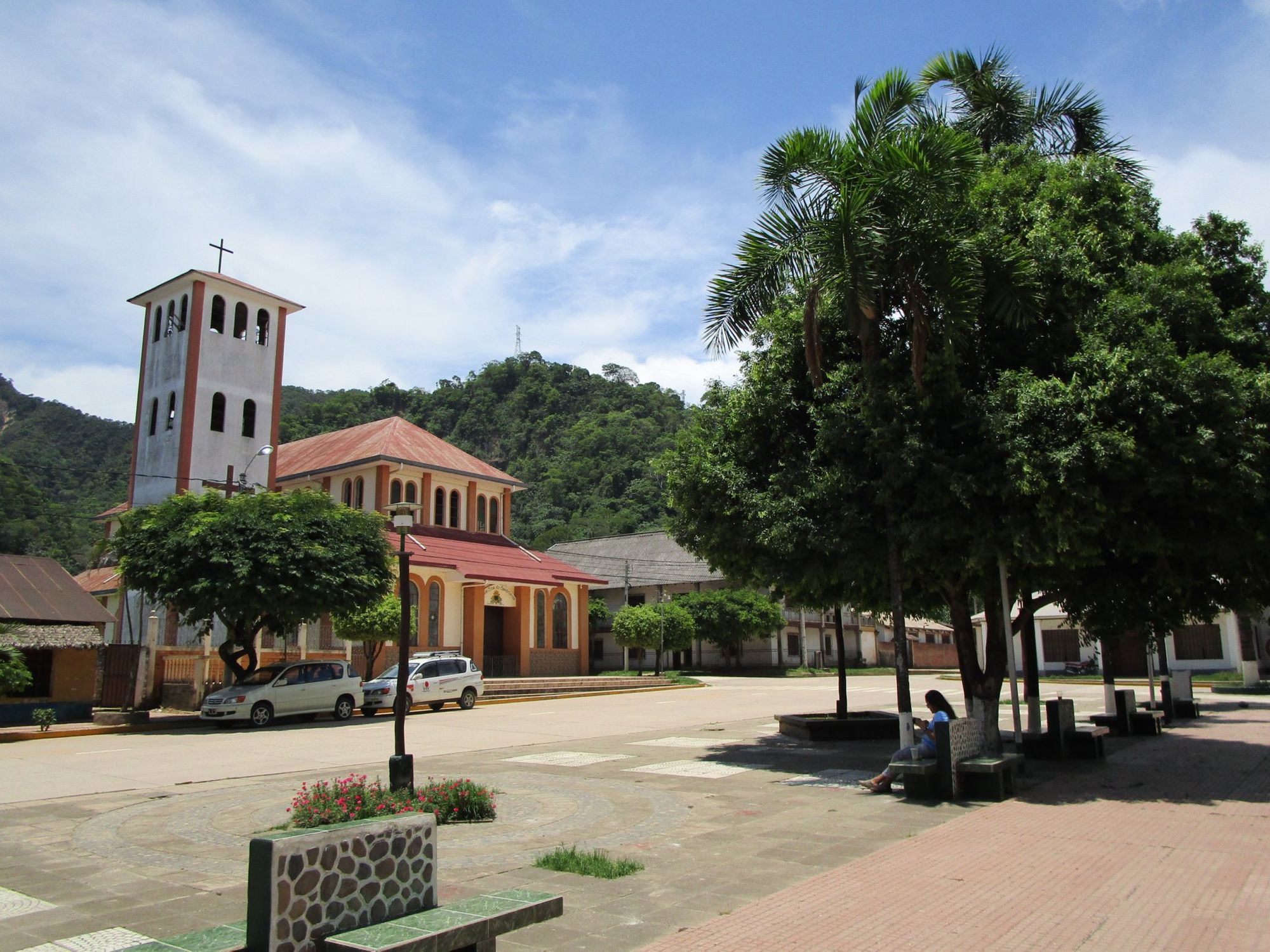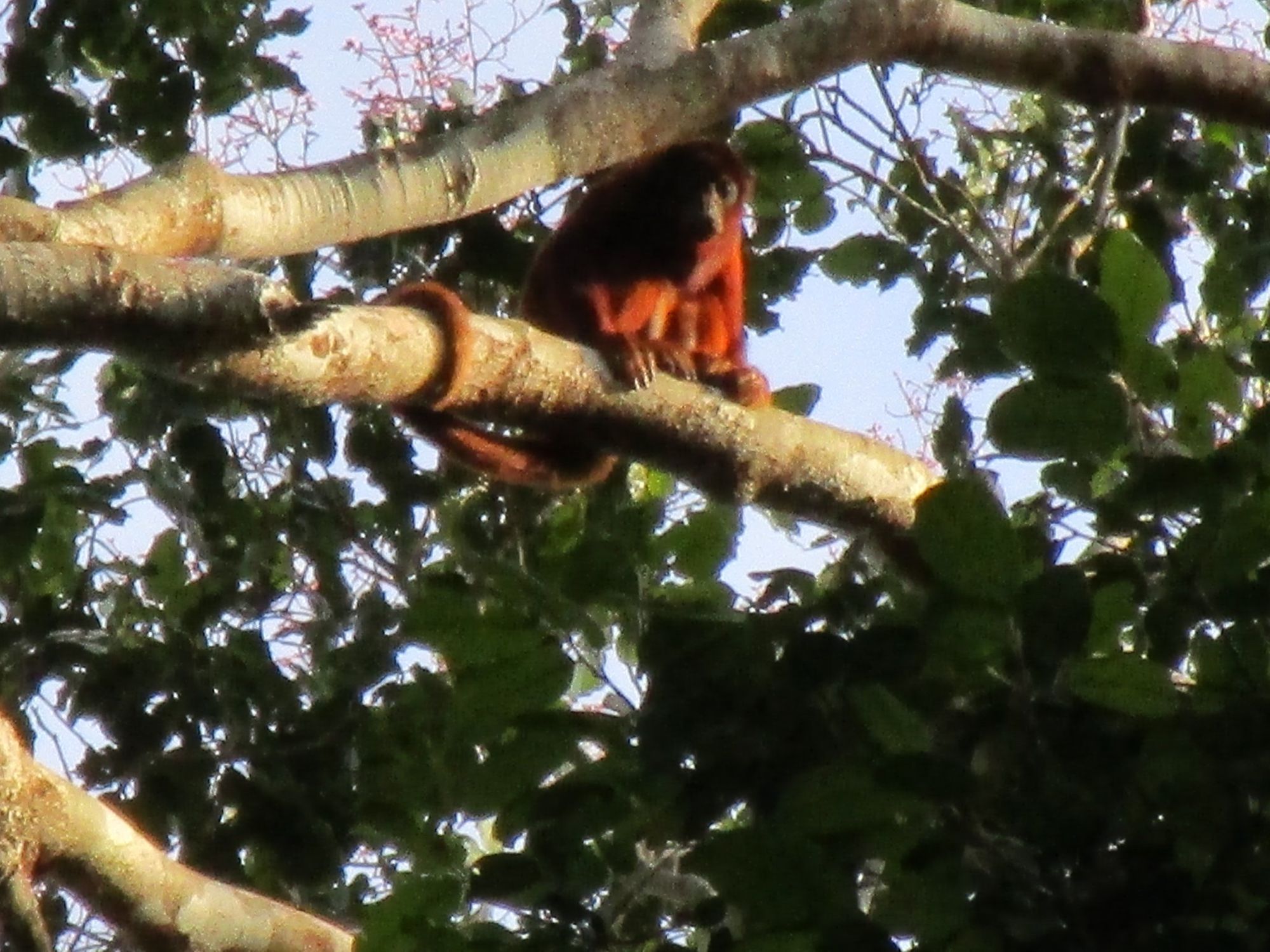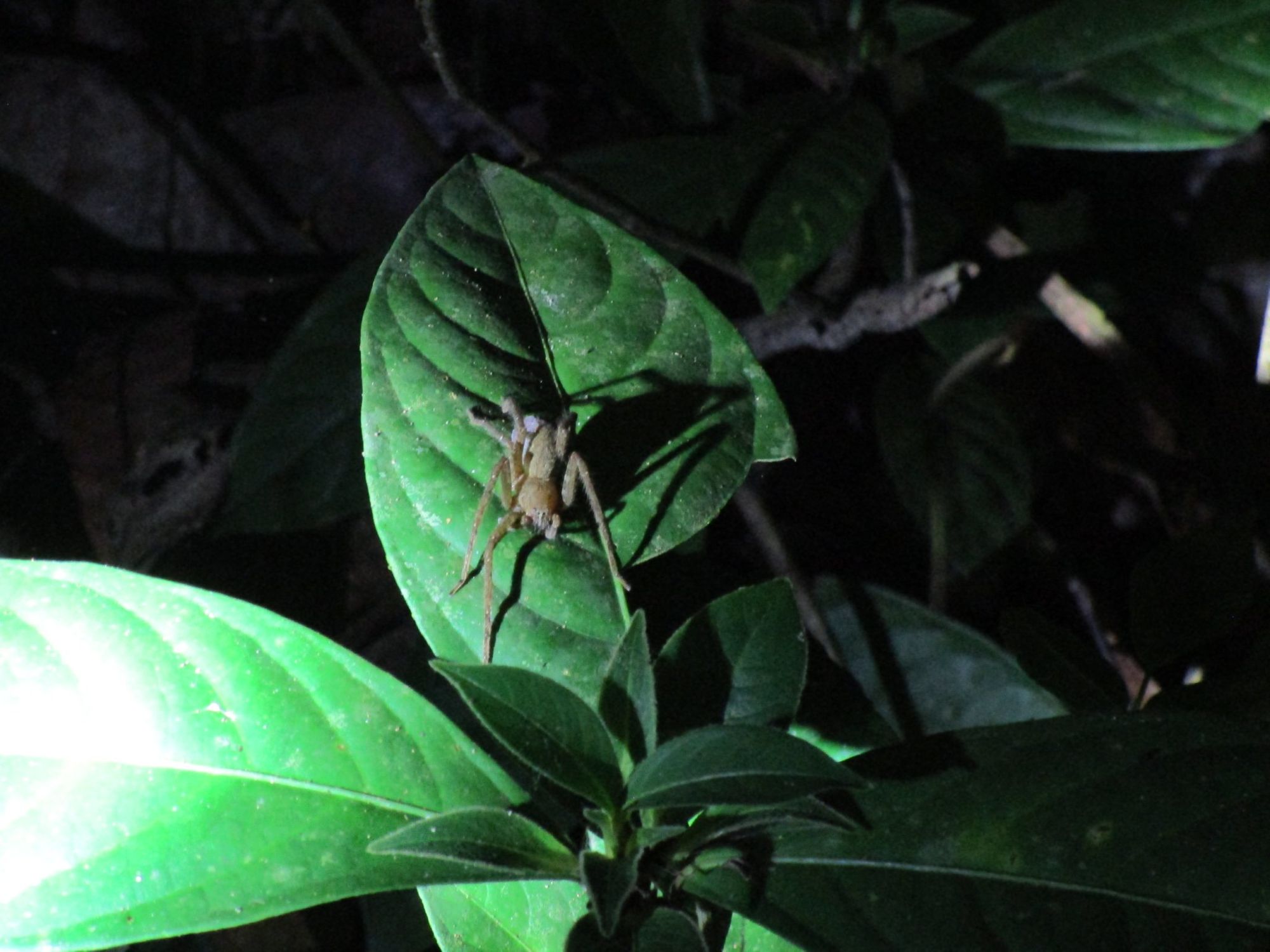Monkeying around in Madidi National Park

Our flight from La Paz to Rurrenabaque was a surreal experience.
After taking off from the airport at El Alto, some 4,000 metres above sea level, we soared close to the snowy peaks of the Andes. Ten minutes or so into the flight, we began to descend. Suddenly the landscape below us changed completely.
Instead of scrubby brown altiplano and snow-capped mountains, there was now thick green jungle as far as the eye could see, with muddy brown rivers snaking across the mostly flat terrain. After just thirty minutes in the air we touched down in Rurrenabaque, in the heart of the Bolivian Amazon.

The heat and humidity hit us the moment we got off the plane, and it didn't ease off for the next four days, even at night. Rurrenabaque is a sleepy little town on the Beni river, where the locals putter around on motorbikes and gringos frequent the gaggle of bars and restaurants in the centre of town. But we were only here briefly; our final destination lay six hours upriver, in the depths of Madidi National Park.

As we left the town behind and cruised down the wide Beni river, the only wildlife we could see was a few butterflies and the odd vulture circling ahead. Once we reached the narrower Tuichi river, the inhabitants of the jungle began to slowly reveal themselves. We saw egrets and herons fishing by the river bank; swallows darting overhead; and the unmistakable silhouette of two scarlet macaws, flying through the treetops. As we neared the lodge we spotted a group of capybaras, a type of giant rodent that resembles a two-foot-tall overgrown hamster.

Eventually we disembarked on the sandy shore of the river and headed up some steep steps into the jungle, swatting away the mosquitoes as we went. We'd chosen to stay at a place called Chalalán Ecolodge, which pioneered the idea of sustainable, community-based tourism when it opened in 1999.
The lodge is entirely owned, staffed and operated by the indigenous Amazonian community of San José de Uchupiamonas, a village situated a further three hours upriver. The lodge was rustic and remote, in a beautiful location next to a lake. All the electricity is generated by solar panels, and is only switched on for a few hours a day.

As we made our way along the trail from the river to the lodge, the jungle suddenly began reverberating with a terrifying roar. It sounded like it had to be something big; a jaguar, perhaps? Our guides quickly started heading towards the noise, and told us to drop our bags on the ground and follow them. As we got closer the rhythmic, rumbling roar got louder, and we realised it was coming from up in the trees. We squinted up at the canopy and spotted a troop of red howler monkeys, clearly keen to let us know that we were in their territory.

Our stay at the lodge was a little bit like being on safari; we would get up each morning and trek into the jungle for a few hours, looking for wildlife. Then another, shorter excursion in the afternoon or evening, with plenty of time for relaxation in between.
It's important to be realistic in your expectations when visiting the Amazon. If you go there expecting to walk into a David Attenborough documentary, with toucans and macaws swooping overhead and jaguars leaping out of the bushes, then you might be a little disappointed. You can walk for hours through the jungle without seeing much apart from ants, and the dense foliage means it's often hard to see the wildlife, even if you can hear it. But, like on a safari, the payoff when you do finally track something down is often immense.

On our first evening at the lodge we went out for a night walk through the jungle with our guide, Andrés, in search of some of the Amazon's nocturnal wildlife. If you don't like bugs then the Amazon is probably not the place for you; we saw hairy tarantulas, wriggling centipedes and evil-looking bullet ants, great big things with a nasty sting at their rear end. Our torches attracted clouds of confused moths, and cicadas came buzzing past our heads like little Apache helicopters.

The next morning we headed out again on a different trail, looking for some of the larger fauna that lives in the forest. For the first couple of days we shared our guide with a middle-aged Italian couple, Giuseppe and Maria. They were nice enough, but Giuseppe clearly fancied himself as a budding National Geographic photographer, sporting a huge telephoto lens the size of a small aircraft carrier, and an unwieldy tripod which was entirely unsuited to hiking along uneven and overgrown trails in search of small, fast-moving wildlife.
As we walked through the jungle, we'd constantly catch sight of things we'd never seen before: electric blue butterflies, shiny beetles, lurid pink flowers and weird finger-shaped fungi. We'd also have to wait an inordinate amount of time for Giuseppe to set up his tripod and locate the wildlife in question with his zoom lens, by which time it had usually flown, crawled or jumped away. It didn't take us too long to find more mammals, however; just off the path we came across a big group of brown capuchin monkeys and little yellow squirrel monkeys, moving through the treetops feasting on fruit.

We were consistently amazed by Andrés's ability to spot tiny bugs and animals from a mile off. He suddenly stopped us as we were walking along a pretty barren-looking stretch of the trail, and pointed to a pile of dead leaves a few metres away. It wasn't quite clear what we were supposed to be looking at, until we noticed the slightest of movements and realised that he was pointing at a tiny poison dart frog. There is absolutely no way we would have spotted it ourselves, in spite of its lurid yellow, blue and red markings. By the end of our stay we realised just how lucky we'd been; in four days we only saw one other frog.

The Amazon is not all about animals; it is also, quite obviously, about trees. Andrés introduced us to some of the more unusual species that make up the jungle canopy, such as the walking palm, which is able to slowly move along the forest floor by growing new roots and shedding old ones. We also saw several strangler figs, a parasitic tree that wraps itself around its host, kills it and uses the nutrients to fuel its own growth.

One of the most enjoyable places to look for wildlife at Chalalán was around the lake. Andrés took us out in a canoe one afternoon, and we drifted serenely around the edges, where we spotted weird dinosaur-like birds called hoatzins, along with cormorants, herons, blue doves and more of the mischievous little squirrel monkeys playing on the branches hanging over the water.
Giuseppe, of course, insisted on setting up his tripod in the canoe. This added an extra layer of excitement as we tried to use our weight to balance out the boat and stop it from capsizing, while he sat perched on one side of the canoe snapping away, seemingly oblivious to the peril he was putting us in.

On our last day we headed a bit further up the river, to an area where the ground is rich in salty clay, which certain animals eat to help with their digestion. As we scrambled up the river bank we saw jaguar footprints in the mud, the closest we got to seeing one of these elusive big cats. An overgrown trail led away from the river, across a couple of precarious log bridges and through boggy mud, to a viewing platform where Andrés told us you could sometimes see black spider monkeys. We sat patiently on the wooden platform, waiting for something to appear, but the jungle remained frustratingly quiet.
Eventually we climbed back down to the forest floor, and we were just about ready to give up and go back to the boat when Andrés suddenly heard the sound he had been listening out for. We quickly made our way, as quietly as we could, through the undergrowth to a spot where we could get a good view of the monkeys up in the treetops. They seemed to be spooked by our presence, and were nervously watching us from above, chattering to each other and swinging about using their unusually long tails like an extra leg. Spider monkeys are difficult to find here; their numbers were hit hard by logging in the years before this area was protected, and they remain nervous of humans.

The trip back to Rurrenabaque was much quicker downriver, taking just three hours, and we stopped off on the way to see a cliffside where scarlet macaws congregate to eat minerals in the clay. We also passed through a narrow, steep-sided section of the river which reminded us of something Andrés had told us about on our last night at the lodge.

It's at this spot that the Bolivian president, Evo Morales, wants to build a new hydroelectric dam, a move that is fiercely opposed by the indigenous people of the Amazon. This dam would involve the flooding of a significant area of Madidi National Park, displacing several indigenous communities. It would also make it impossible to travel up the river by boat to Chalalán, which would effectively spell the end for the lodge.

We hear about threats to the Amazon so often that it's easy to become a little desensitised to it, but this fragile ecosystem is in danger like never before, and not just in Bolivia. Three days before we arrived in the Amazon, Brazil's presidential election was won by Jair Bolsonaro, who has promised to open up the rainforest to agriculture and logging, and has threatened to strip indigenous communities of their protections.
While I don't think you need to visit the Amazon to understand why it needs protecting, our trip certainly gave me a new found appreciation for exactly what we stand to lose if people like Bolsonaro and Morales are allowed to shape the future of the rainforest.

